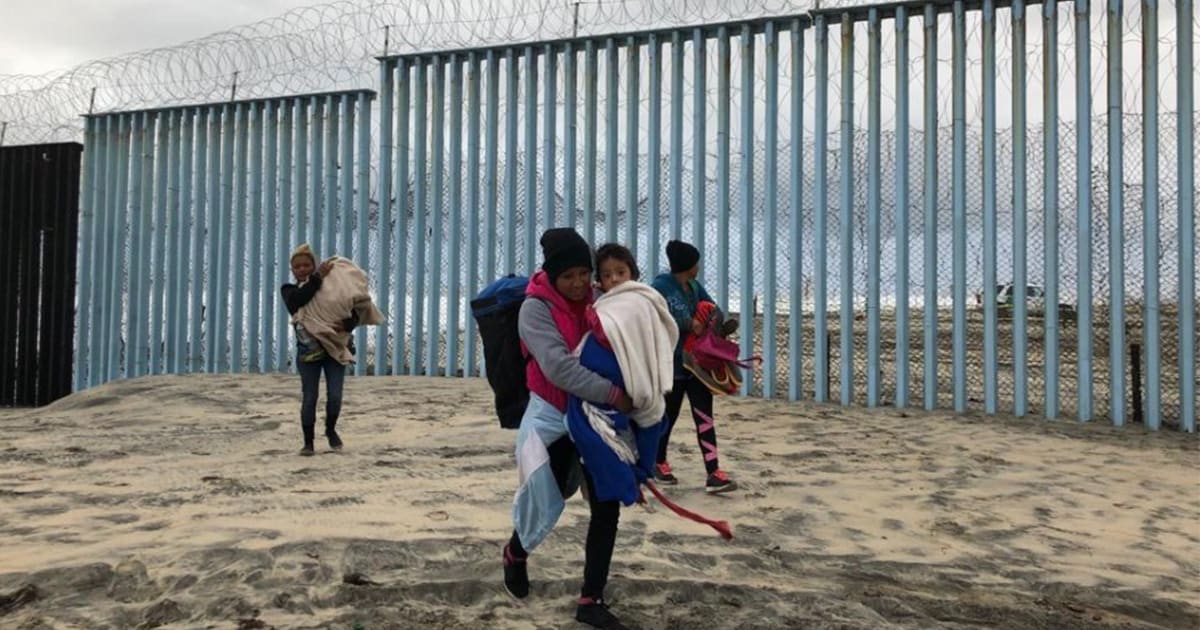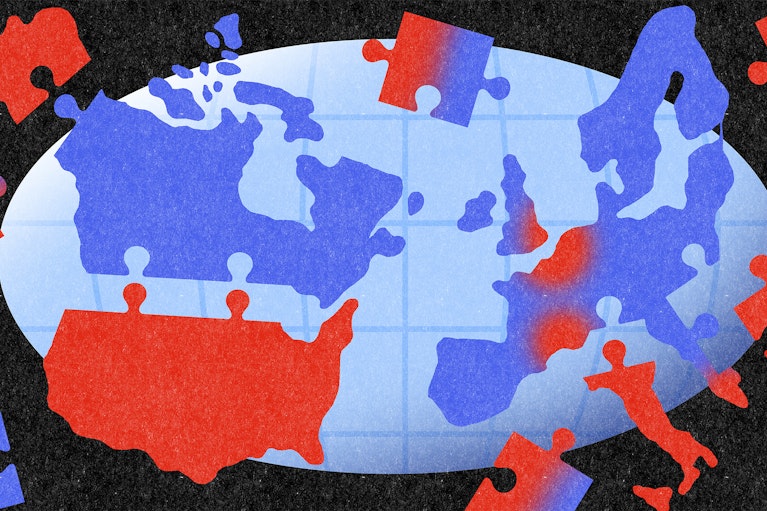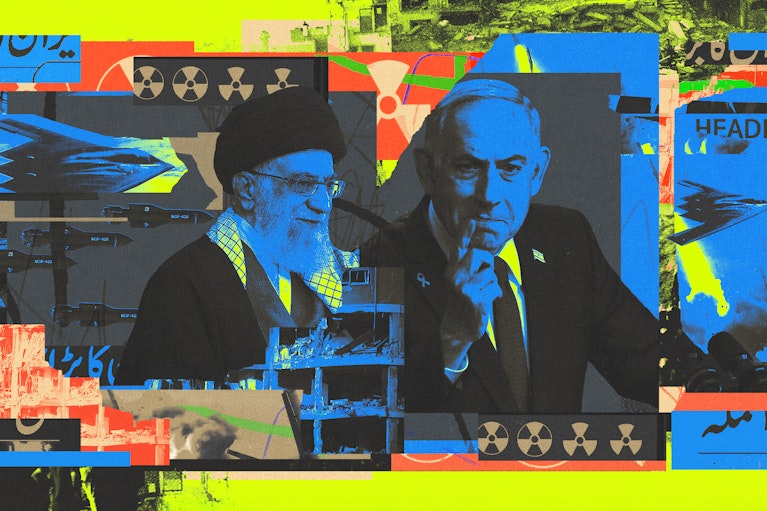Nathan Gardels is the editor-in-chief of Noema Magazine. He is also the co-founder of and a senior adviser to the Berggruen Institute.
Asylum was once a fairly straightforward proposition: Anyone fleeing from the ravages of war in their home territory or who is being persecuted by the powers-that-be for political, religious, ethnic or racial reasons should be able to seek refuge in a safe country.
Today, this distinction between refugees and migrants is blurring. Many are fleeing not from strong states that would persecute them but from failed states that can’t protect them — including from gang and domestic violence that fester in impoverished conditions where the rule of law is weak. Increasingly, climate change is also a factor.
The globalization of communication and mobility, coupled with vast inequality in life chances, has further intensified the push-pull dynamic of migrant flows. This surge comes at a time when it is harder than ever for the more advanced nations — some stuck in a slow growth trajectory — to integrate large communities of newcomers who lack the skills and education to succeed in the rapidly innovating knowledge economy where automation and artificial intelligence are on track to eliminate entire categories of jobs.
The swell and steady stream of those crossing borders seeking either safety or opportunity have swamped local sympathies, leading to a nativist backlash, not only in Europe and the United States, but also across the developing world — in South Africa, Mexico, the Latin American countries neighboring a collapsing Venezuela and even Bangladesh, where Rohingya who have sought refuge from persecution in Myanmar face hostility.
In The WorldPost this week, we examine how to disentangle and cope with the fused challenges of asylum and migration.
David Miliband, a former British foreign secretary who now heads the International Rescue Committee, puts the challenge in sharp focus. “Refugees have different legal rights than economic migrants,” he says, “although classifying people into these two categories can be difficult in practice. People fleeing economic collapse, famine or climate change certainly have a claim to international aid and protection, but they are not the same as people for whom religion, ethnicity or political affiliation directly puts their life at risk. All those on the move deserve protection, but despite the increase in ‘mixed migration,’ in which people are fleeing their homes simultaneously for safety and economic wellbeing, opening up the definition of a refugee holds peril for both refugees and would-be immigrants, such as a downgrading of human rights and protection from abuse or exploitation.”
Miliband is gratified that the new UN Global Compact on Refugees agreed on Monday did not confuse issues further by redefining refugee status. Instead, it reaffirmed the basic humanitarian principle “that a person must not be returned to his or her country of origin if they will not be safe there.” What concerns him, however, is the loose, non-binding terms of the compact both with respect to the unequal burdens of accepting refugees and caring for those stranded in safe countries outside zones of conflict, often for years.
“Countries like the United States are getting something close to a free ride” on its global responsibilities, he writes. “If the United States hosted refugees in the same proportion as Uganda, it would house 8.5 million refugees instead of the 3 million resettled since 1980. The Trump administration reduced the number of refugees admitted to the United States under its resettlement program from the historic average of 90,000 a year to only 22,000 in the last fiscal year. The cap for the current fiscal year is only 30,000 refugees.”
He goes on: “Secretary of State Mike Pompeo has repeatedly said we need to ‘take care of them over there.’ But international aid is not keeping pace with the needs of refugee-hosting states. The UN’s study of the financing of crisis-affected states showed a 40 percent shortfall, so the gap between needs and provision is growing every day. That is why the UN’s global compact will only be a game-changer if it galvanizes action in the places and for the people who need help.”
Ayaan Hirsi Ali is a feminist activist who fled her native Somalia and sought refuge in the Netherlands, where she later became a member of the Dutch Parliament. “The global asylum and refugee system,” she writes, “is no longer fit for purpose. As a beneficiary of that system, I do not make such a statement lightly. The reality is that it is outdated and can no longer cope with the challenges posed by mass violence and global migration today.”
She traces the origins of the 1951 refugee convention to the displacement of Jews during World War II and the onset of the Cold War. “It’s been argued that the convention’s architects intended it to provide a method of escape for those caught on the wrong side of the iron curtain,” she writes. “It defined a refugee as someone outside their country who could not return to it for fear of persecution ‘for reasons of race, religion, nationality, membership of a particular social group or political opinion.’ The refugee system was a temporary solution to a post-war problem, not a long-term offer. And it certainly wasn’t intended as a way of skipping the line to access a better quality of life.”
Hirsi Ali’s concern is the clash of values that comes along with large communities of immigrants today that don’t come from liberal cultures.
“We must retain the core principle of providing refuge for individuals or groups persecuted by intolerant movements or regimes,” she argues, citing the example of “the Pakistani Christian Asia Bibi, who is still threatened with death despite having been cleared by the courts of blasphemy charges.”
But, she continues: “We need a better system for admitting those who do not qualify as refugees — one that builds integration considerations into the process from the outset when the person applies for entry. Rather than focusing on where people come from and what their motivations are for leaving, I believe the main criterion for granting residence should be how likely migrants are to abide by the laws and adopt the values of their host society.”
Rick Barton, a former UN deputy high commissioner for refugees, argues that those fleeing gang violence in places like El Salvador or Honduras qualify as refugees because they have a “well-founded fear of persecution.” But he also argues that the best way to stem the refugee flow is not at the border but by working with local governments and civil society groups in the country of origin to temper gang violence while bolstering the rule of law and ending impunity for corrupt officials that deprive citizens of hope in their future. He cites, as just one example, his experience with a Salvadoran minister of security who brokered a peace deal between gangs back in 2012. “During that time,” he writes, “it reduced homicide rates from 15 per day to less than five and is credited with saving over 5,000 lives.”
Solon Ardittis writes from Marrakesh, Morocco, where the UN completed deliberations last week on the first ever global pact on migration. While the pact is not ideal, he argues, it does lay out non-binding aspirational guidelines for how states, cities and civil society can coordinate and cooperate on humane policies without infringing their national sovereignty.
In the end, only a comprehensive set of policies can address what has become an enduring crisis. States must abide their humanitarian responsibilities to offer asylum for the persecuted while proactively doing what they can to pacify and stabilize societies from which people must flee for their safety. Similarly, limiting immigration to those who fit the economic needs and values of the societies they seek to enter, and who hold the skills needed to thrive in their new homes, must go hand in hand with promoting sound governance and development in the impoverished lands from which they come.
This was produced by The WorldPost, a partnership of the Berggruen Institute and The Washington Post.





